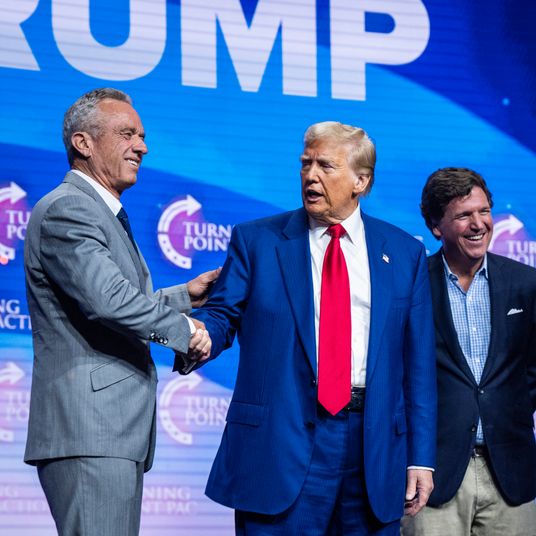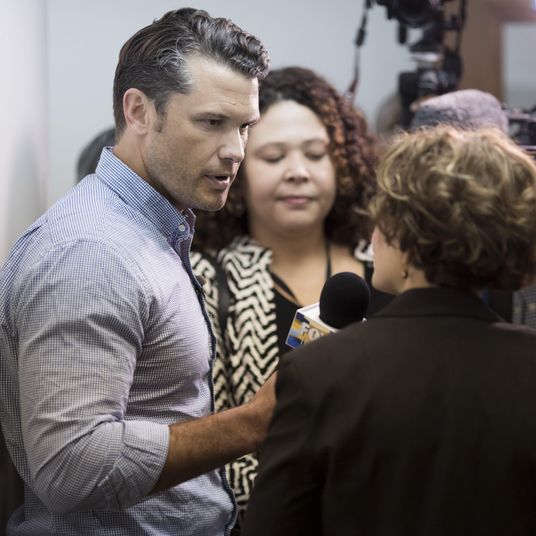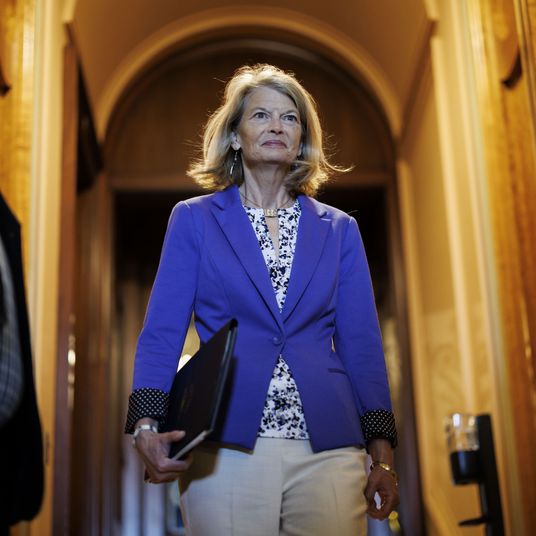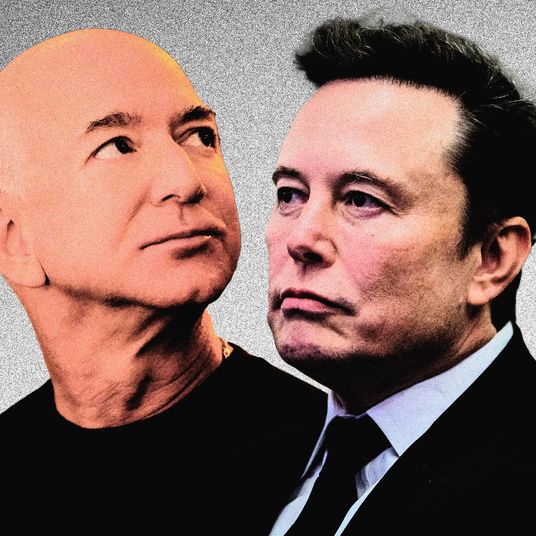
“Have some Nvidia beads!” Lauren Balik hands me the green Mardi Gras–plastic necklace and — sure, why not? It’s just before 4 p.m. at the Store House in Chelsea. A bunch of black, green, and white balloons slam me in the face. Bubbles float through the air, and CNBC is broadcast on seven screens hanging above the 30-odd people who are here for one reason: to see just what unfathomable amount of money Nvidia, the “most important stock on planet Earth,” made during the last three-month earnings period.
Nvidia is at the peak of its hype cycle. This year, the computer-chip maker became something like a vector of all of capitalism’s hopes and dreams as it rocketed past $3 trillion in market value, more than tripling in value over the past 12 months. Thanks to a dashed-off tweet from Balik, finance and tech superfans descend upon the bar for a quarterly earnings watch party.
I’ve been covering Wall Street in some form for 14 years, and this is the first time I’m aware of that a single company’s 10-Q regulatory filing has made a bunch of people who don’t even work there throw a party. “All of this is really embarrassing!” said Takara Satone, 27, who told me she works at a “big tech company.” Part of it is the power of financial memes and the stunning rise in Nvidia’s share price over the past year, which has catapulted it to the second-largest company in the world by market cap, after Apple. Most of the people here I spoke with owned some shares, and one had almost his entire life savings. But Nvidia has become something else — a feel-good story at a time when the economy has otherwise been so unsteady. “This is just the bubble in physical form,” said Howe Wang, an investor who was blowing bubbles into the air.
“I’m a believer,” said a man visiting from Texas who also works at “a big tech company” and was wearing an Nvidia T-shirt. He said he has invested in Nvidia since 2017 and has seen his shares rise about 3,000 percent. On Monday, he bought a studio apartment in Hudson Yards with the proceeds. Next year, he hopes to retire.


By 4:20, just before the earnings came out, the crowd swelled to about 60. NPR sent a reporter. So did The Wall Street Journal and Morning Brew. Most of the investors were in their 20s; a few were older. CNBC treated the earnings like it was New Year’s Eve with a countdown clock. Everyone joined in, shouting, “3! 2! 1!”
A miss!
Nvidia made a paltry $30 billion from April to June — actually better than some estimates, but well below the most euphoric expectations for Wall Street’s most die-hard investors. Balik booed. The whole vibe deflated. A stock chart traded sideways and then way down, around 7 percent. A man in a collarless celadon button-down balked when I asked him his thoughts about it, looking as if I’d killed his dog. Others were far less attached. “I don’t really know anything. I barely care,” Satone said. “I just wanted to see what was happening with this meme event.”
To be fair, the expectations were insane. Nvidia has been a phenomenon arguably since June, when Jensen Huang, the 61-year old leather-jacket-clad CEO, signed a woman’s breast, the kind of over-the-top celebrity treatment that normally doesn’t get afforded to Silicon Valley executives. (If there are pictures of Mark Zuckerberg or Elon Musk doing the same, I’m not aware of them.) At the time, the company was well on its way toward a $3.35 trillion market value, not just enriching its own employees but supporting the stock market as a whole.
Balik had planned to play the earnings calls over the bar’s speaker system, but by 5 p.m., almost everyone had left. “I was pulling for Nvidia to go down a bit. I thought it would be funnier,” she said. “But I don’t want anybody to lose their shirt!”






























